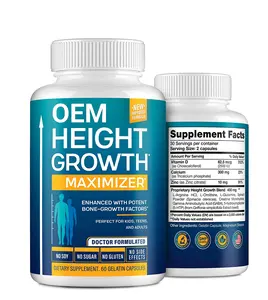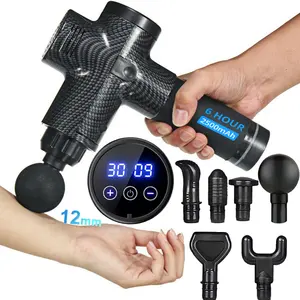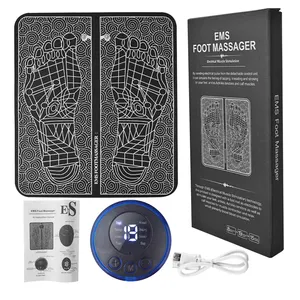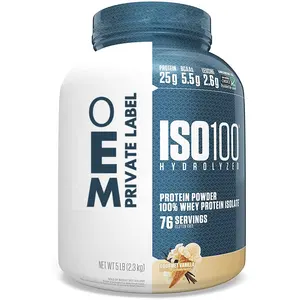Phổ biến trong ngành của bạn






Chất lượng cao coriolis khối lượng đo lưu lượng khí lỏng coriolis lưu lượng kế mật độ dầu lưu lượng kế khối lượng đo lưu lượng thức ăn bùn
38.904.257 ₫ - 201.022.683 ₫
Đơn hàng tối thiểu: 1 Bộ







Lưu Lượng Kế Cảm Biến Lưu Lượng Kế Tuabin Nước Với Kết Nối Tín Hiệu Xung Lưu Lượng Kế 2 Inch 1 Inch
1.655.208 ₫ - 2.546.474 ₫
Đơn hàng tối thiểu: 1 Hộp các tông







Kỹ thuật số nước lỏng xung 4-20mA RS485 Hart điện từ lưu lượng kế giá medidor de corriente điện từ đo lưu lượng
5.856.889 ₫
Đơn hàng tối thiểu: 1 Bộ







4-20mA xung modbus Đầu ra Analog lưu lượng kế nước rượu dầu nhiên liệu sữa lưu lượng kế kỹ thuật số đo lưu lượng
5.347.595 ₫ - 8.912.657 ₫
Đơn hàng tối thiểu: 1 Hộp các tông







Máy Đo Lưu Lượng Nước Loại E8000 Máy Phát Lưu Lượng Dầu Cảm Biến Lưu Lượng Nước Lưu Lượng Kế Điện Từ
1.527.885 ₫ - 2.164.503 ₫
Đơn hàng tối thiểu: 1 Cái







Thượng Hải cixi kim loại ống gas Air chống ăn mòn rotor lưu lượng kế
6.086.072 ₫ - 7.613.956 ₫
Đơn hàng tối thiểu: 1 Cái






Đồng Hồ Đo Lưu Lượng Ống Kim Loại Lạnh Tiêu Chuẩn Nhật Bản Lưu Lượng Kế
942.196 ₫ - 993.125 ₫
Đơn hàng tối thiểu: 1 Cái






Cixi siêu âm nước Meter lưu lượng kế treo tường siêu âm Flow Meter
Sẵn sàng vận chuyển
6.875.479 ₫ - 7.384.773 ₫
Đơn hàng tối thiểu: 1 Bộ
Vận chuyển mỗi chiếc: 1.086.581 ₫






Wesdom Cixi TDS-100H Treo Tường Và Cầm Tay Kẹp Cầm Tay Trên Máy Đo Lưu Lượng Nước Siêu Âm Pin Lưu Lượng Kế Siêu Âm
7.652.153 ₫ - 10.073.849 ₫
Đơn hàng tối thiểu: 1 Cái






Dụng Cụ Đo Kỹ Thuật Số Cixi Thượng Hải Dụng Cụ Tổng Hợp Cho Máy Đo Lưu Lượng Bộ Điều Khiển Hàng Loạt
1.833.461 ₫ - 1.909.856 ₫
Đơn hàng tối thiểu: 1 Cái






Thượng Hải cixi Chuck vệ sinh đường ống thép không gỉ rotor lưu lượng kế
6.086.072 ₫ - 7.613.956 ₫
Đơn hàng tối thiểu: 1 Cái
Các tìm kiếm liên quan:
lưu lượng kế ningbolưu lượng kế nittolưu lượng kế welltechlưu lượng kế lzslưu lượng kế fcilưu lượng kế krohnelưu lượng kế flumelưu lượng kế lỗ tiêu chuẩnlưu lượng kế gpilưu lượng kế asphatumlưu lượng kế atexlưu lượng kế 4 20malưu lượng kế 4 20ma giálưu lượng kế chính xác cao điện từlưu lượng kế cho ngành công nghiệp






Nhiệt Độ Cao Kỹ Thuật Số Rs485 Nhiệt Gas Mass Flow Sensor, Chèn Lưu Lượng Kế Từ
15.482.559 ₫ - 16.246.501 ₫
Đơn hàng tối thiểu: 1 Đơn vị






Thượng Hải Cixi 100% Chống Sốc Áp Suất Cao Methanol Tiêm Tích Cực Chuyển Lưu Lượng Kế
8.403.363 ₫ - 9.803.923 ₫
Đơn hàng tối thiểu: 1 Cái






Thượng Hải cixi gas lỏng thép không gỉ 304 chống ăn mòn thủy tinh rotor lưu lượng kế
6.086.072 ₫ - 7.613.956 ₫
Đơn hàng tối thiểu: 1 Cái






Lưu Lượng Kế Điện Từ Giá Chất Lượng Cao Bán Chạy, Biểu Đồ Lưu Lượng Sản Xuất, Đồng Hồ Đo Nước Đầu Ra Xung
7.333.844 ₫
Đơn hàng tối thiểu: 1 Cái






Đồng Hồ Đo Lưu Lượng Công Nghệ Đức Cixi 100% Thượng Hải Công Tắc Cảm Biến Hall Đồng Hồ Đo Lưu Lượng
11.459.131 ₫ - 15.253.376 ₫
Đơn hàng tối thiểu: 1 Cái






Shanghai cixi Độ chính xác cao vi hình bầu dục bánh flowmeter cho chất lỏng ăn mòn
2.266.362 ₫ - 3.081.233 ₫
Đơn hàng tối thiểu: 1 Cái






0.5 Ml/phút Và 0.2% Độ Chính Xác Lưu Lượng Kế Nhựa Offset Ink Micro Tích Cực Chuyển Lưu Lượng Kế ForTest Bench
4.583.653 ₫
Đơn hàng tối thiểu: 1 Cái






Thượng Hải Cixi Đồng Hồ Đo Lưu Lượng Bánh Răng Dầu Nhiên Liệu Diesel Độ Bền Cao
3.565.063 ₫ - 3.845.175 ₫
Đơn hàng tối thiểu: 1 Cái






Đồng Hồ Đo Lưu Lượng Ổ Đĩa Từ Tính Dạng Khô Tiêu Chuẩn Iso 4064 Class B Giá Lưu Lượng Kế Từ Tính
50.930 ₫ - 1.273.237 ₫
Đơn hàng tối thiểu: 1 Cái






Chất lượng hàng đầu điện tử nước lưu lượng kế cảm biến lưu lượng nước
50.930 ₫ - 76.395 ₫
Đơn hàng tối thiểu: 300 Cái






Cảm Biến Lưu Lượng Nước Chất Lượng Cao Thiết Bị Đo Lưu Lượng Nước Điện Tử Cảm Biến Lưu Lượng Từ Tính
20.372 ₫ - 25.465 ₫
Đơn hàng tối thiểu: 1000 Cái






Thượng Hải cixi xung bánh răng hình bầu dục lưu lượng kế khí Dispenser cảm biến OGM bánh răng hình bầu dục lưu lượng kế
1.744.335 ₫ - 1.998.982 ₫
Đơn hàng tối thiểu: 1 Cái






Nhỏ Flow Meter robot phun thiết bị micro oval bánh lưu lượng kế
4.329.005 ₫ - 4.838.300 ₫
Đơn hàng tối thiểu: 1 Cái






Đồng Hồ Đo Lưu Lượng Dầu Diesel Cixi Thượng Hải Đồng Hồ Đo Lưu Lượng Kỹ Thuật Số, Đồng Hồ Đo Lưu Lượng Tuabin Kỹ Thuật Số, Đồng Hồ Đo Lưu Lượng K24
483.830 ₫ - 534.760 ₫
Đơn hàng tối thiểu: 1 Cái






Máy Đo Lưu Lượng Nước Trả Trước Thông Minh Với Phần Mềm Digitalize Có Dây Từ Xa Quang Điện Đọc Trực Tiếp RS485
50.930 ₫ - 1.273.237 ₫
Đơn hàng tối thiểu: 1 Cái






Công Tắc Cảm Biến Lưu Lượng Nước Nhà Máy Cảm Biến Lưu Lượng Kế Cảm Biến Lưu Lượng Nước Từ Tính
49.657 ₫ - 57.296 ₫
Đơn hàng tối thiểu: 200 Cái






Thượng Hải cixi cầm tay thông minh siêu âm lưu lượng kế xách tay lưu lượng kế
7.282.914 ₫ - 11.382.736 ₫
Đơn hàng tối thiểu: 1 Cái






Độ chính xác cao đầu ra LPG nhiên liệu Clo Tự nhiên lưu lượng khí mét máy nén khí hơi nước không khí Vortex lưu lượng kế giá
7.613.956 ₫ - 9.065.446 ₫
Đơn hàng tối thiểu: 1 Cái






Shanghai Cixi Công Nghiệp Flow Meter Nhỏ Bánh Flow Meter
Sẵn sàng vận chuyển
4.074.358 ₫ - 22.154.319 ₫
Đơn hàng tối thiểu: 1 Cái
Vận chuyển mỗi chiếc: 656.736 ₫






Máy Ảnh Không Dây Máy Đo Nước Từ Xa Hoạt Động Không Dây Máy Đo Lưu Lượng Nước Bằng Siêu Âm
509.295 ₫ - 1.527.885 ₫
Đơn hàng tối thiểu: 1 Cái






Thượng Hải cixi Micro Elliptical Gear lưu lượng kế Common Rail thử nghiệm băng ghế dự bị phun nhiên liệu vòi phun lưu lượng kế
6.850.014 ₫ - 7.359.309 ₫
Đơn hàng tối thiểu: 1 Cái












Shanghai Cixi Phạm Vi Đo Lường Rộng Hạt Flow Meter Đo Lường
9.651.135 ₫ - 10.160.429 ₫
Đơn hàng tối thiểu: 1 Cái






Hiệu suất cao lorawan truy cập từ xa thông minh nước lưu lượng kế IC thẻ trả trước Đồng hồ nước
1.420.933 ₫ - 1.446.397 ₫
Đơn hàng tối thiểu: 5 Cái







Sản xuất cung cấp nước bằng thép không gỉ Collector 2-13 cách với flowmeter đa dạng
891.266 ₫ - 1.018.590 ₫
Đơn hàng tối thiểu: 100 Bộ






1/2 "3/4" 1 "1.5" 2 "Wl Máy Đo Lưu Lượng Tuabin Điện Tử Kỹ Thuật Số
990.579 ₫ - 1.245.226 ₫
Đơn hàng tối thiểu: 6 Cái






Dòng Chảy Cộng Lại Cấp Thực Phẩm Sữa Dòng Turbine Mét Bia Lưu Lượng Kế
2.699.262 ₫ - 2.826.586 ₫
Đơn hàng tối thiểu: 1 Cái
Các danh mục hàng đầu
Giới thiệu về lưu lượng kế cixi
Ngày nay, lưu lượng kế cixi không còn là điều mới mẻ đối với những người bình thường và không còn bị coi là điều cấm kỵ khi sử dụng. Nếu bạn đang tìm kiếm niềm vui áp chót đó, bạn phải kiểm tra sự bao la. Bộ sưu tập lưu lượng kế cixi tại Alibaba.com. Những gợi cảm và cong. lưu lượng kế cixi đáng giá từng xu và chắc chắn làm cho đêm đó trở nên đặc biệt đối với bạn. Những con búp bê này có ngoại hình giống như thật, bắt đầu từ tóc đến ngón chân theo mọi nghĩa.
Cho dù bạn là một người cô đơn đang tìm kiếm một người bạn đời như cuộc sống hay một cặp vợ chồng muốn thêm gia vị cho cuộc sống của họ, bạn đều có thể sử dụng chúng . lưu lượng kế cixi để đốt cháy ngọn lửa đó. Những ngoạn mục. lưu lượng kế cixi có thể tùy chỉnh theo mong đợi của bạn. Những điều tuyệt vời. lưu lượng kế cixi có sẵn ở cả phiên bản dành cho nam và nữ và được làm từ silicone cấp y tế để sử dụng an toàn. Hãy sở hữu ngay bây giờ và tận hưởng một đêm đam mê và cháy bỏng.
Alibaba.com cung cấp những điều tuyệt vời này. lưu lượng kế cixi ở mọi hình dạng cơ thể, kích thước và sắc tộc. Dù yêu cầu của bạn đối với. lưu lượng kế cixi, bạn có thể tải tất cả chúng trên trang web. Những cái này. lưu lượng kế cixi được tạo hình bởi những người thợ thủ công giỏi nhất và mọi chi tiết phức tạp đều được kiểm tra kỹ lưỡng. Những con búp bê này có mắt, tóc, móng tay và tất cả các bộ phận cơ thể khác tương tự như người thật.
Alibaba.com cung cấp nhiều loại. lưu lượng kế cixi có thể giúp bạn mua các sản phẩm phù hợp với ngân sách và các yêu cầu khác của bạn. Các sản phẩm này an toàn để sử dụng, được chứng nhận và thân thiện với môi trường trong tự nhiên. Đơn đặt hàng OEM có sẵn trên các sản phẩm này.
Cho dù bạn là một người cô đơn đang tìm kiếm một người bạn đời như cuộc sống hay một cặp vợ chồng muốn thêm gia vị cho cuộc sống của họ, bạn đều có thể sử dụng chúng . lưu lượng kế cixi để đốt cháy ngọn lửa đó. Những ngoạn mục. lưu lượng kế cixi có thể tùy chỉnh theo mong đợi của bạn. Những điều tuyệt vời. lưu lượng kế cixi có sẵn ở cả phiên bản dành cho nam và nữ và được làm từ silicone cấp y tế để sử dụng an toàn. Hãy sở hữu ngay bây giờ và tận hưởng một đêm đam mê và cháy bỏng.
Alibaba.com cung cấp những điều tuyệt vời này. lưu lượng kế cixi ở mọi hình dạng cơ thể, kích thước và sắc tộc. Dù yêu cầu của bạn đối với. lưu lượng kế cixi, bạn có thể tải tất cả chúng trên trang web. Những cái này. lưu lượng kế cixi được tạo hình bởi những người thợ thủ công giỏi nhất và mọi chi tiết phức tạp đều được kiểm tra kỹ lưỡng. Những con búp bê này có mắt, tóc, móng tay và tất cả các bộ phận cơ thể khác tương tự như người thật.
Alibaba.com cung cấp nhiều loại. lưu lượng kế cixi có thể giúp bạn mua các sản phẩm phù hợp với ngân sách và các yêu cầu khác của bạn. Các sản phẩm này an toàn để sử dụng, được chứng nhận và thân thiện với môi trường trong tự nhiên. Đơn đặt hàng OEM có sẵn trên các sản phẩm này.












